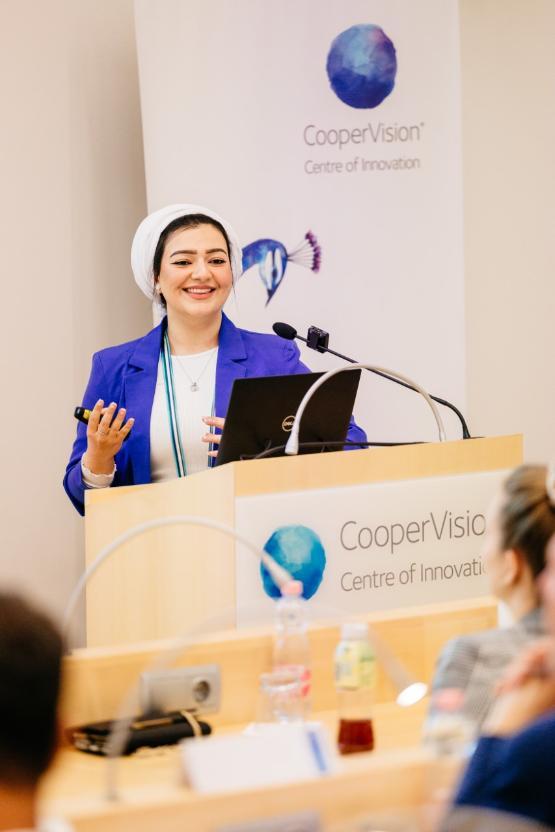Bradford student has her eye on the future
A student from the University of Bradford has won the coveted ‘2022 FORCE Student of the Year’ award from contact lens design and manufacturing company Coopervision for her research into eye movements and contact lenses for managing myopia (short-sightedness).

Myopia management programmes currently use contact lenses to slow the progression of the condition during childhood, and recently graduated Optometry student Muskaan Hussain was keen to explore the effect of them on eye movements and the ability to focus whilst reading - both things which can impact learning in children.
With an increase in myopia shown globally, research into managing the condition was a topic that 22 year old Muskaan from Sheffield was keen to explore: “This was a really interesting topic for me, because I’ve worn glasses since I was four years old.
“I thought potentially that if more research was done in this field that I could help people in similar situations.”
The annual competition - known as the Future Ocular Research Creativity Event (FORCE) sees students from across Europe presenting their research to a panel of experts. Muskaan joined the very best students from across Europe, the Middle East, and Africa to showcase her research at Coopervisions’s Centre of Innovation in Budapest, Hungary and will also present at the British Contact Lens Association (BCLA) clinical conference and exhibition in Manchester later this year.
Muskaan said: “It was such a rewarding experience, being chosen to present my research, and my lecturers were so supportive.
“The university really sees potential in their students and will support you in these opportunities to push yourself.”
Dr Neema Ghorbani Mojarrad, Assistant Professor at the University of Bradford, who supervised Muskaan’s research said: “This was the first ever contact lens competition win for the University of Bradford, which we’re really excited about, and we’re very proud of Muskaan, she did so well.
“This project will shape future research and whether we need to investigate reading eye movements in different contact lenses more, particularly in children.”
